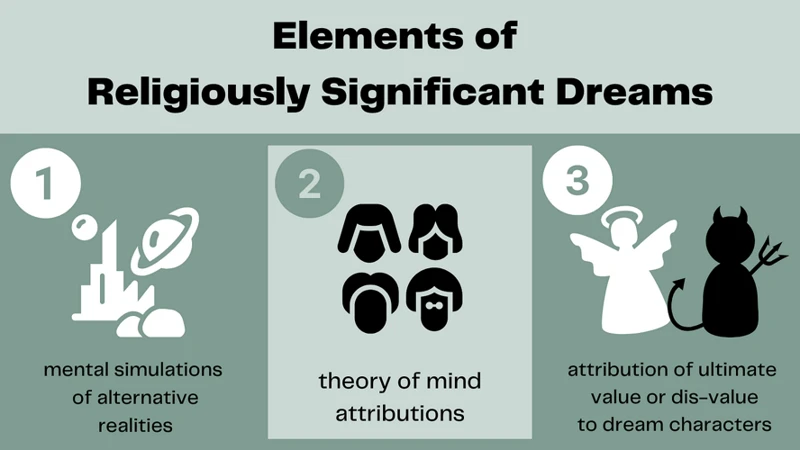Imagine a world where reality and imagination intertwine, giving birth to a realm where anything is possible – welcome to the enigmatic realm of dreams. Dreams have long held a mystical and captivating allure, offering glimpses into the depths of our subconscious mind. Throughout history, dreams have been an endless source of inspiration, curiosity, and even fear, leading to the creation of various idioms that attempt to capture their essence. In this ultimate guide to idioms about dreams, we will embark on a journey to unravel the true meanings behind these dream-related expressions, delving into their origins, significance, and the hidden messages they convey. So fasten your seatbelts and get ready to explore the intricacies of the dream world like never before.
1. What Are Idioms?

Idioms, like a hidden treasure chest of language, are expressions that carry a figurative meaning beyond the literal interpretation of their individual words. These linguistic gems add flavor and depth to our conversations, providing a shortcut to convey ideas, emotions, and experiences in a more colorful and imaginative way. Often steeped in cultural background and historical context, idioms are the spice that spices up our language, making it more vibrant and engaging. They encapsulate the collective wisdom and cultural nuances of a language, allowing us to navigate the complexities of communication with finesse. For example, the idiom “to let the cat out of the bag” signifies revealing a secret or a surprise unintentionally, while “to kick the bucket” is a euphemism for dying. Idioms offer a rich tapestry of expressions, enhancing our ability to connect and express ourselves creatively. So, let us dive deeper into the captivating world of dreams and explore the idioms that have emerged from this ethereal realm.
1.1 Definition of Idioms
Idioms are peculiar phrases or expressions that possess a figurative meaning different from the literal interpretation of their individual words. They are a product of the cultural and linguistic evolution of a society, often influenced by historical events, customs, and beliefs. Idioms serve as a form of shorthand in communication, allowing speakers to convey complex ideas or emotions in a concise and vivid manner. These linguistic gems add depth, color, and creativity to language, making conversations more engaging and memorable. For example, the idiom “raining cats and dogs” does not actually mean that animals are falling from the sky, but rather that it is raining heavily. Similarly, the phrase “burn the midnight oil” is used to describe studying or working late into the night. Idioms can be challenging for non-native speakers to grasp, as their meaning is derived from cultural context rather than literal interpretation. Nonetheless, they are a fascinating aspect of language that showcases the intricacies of human expression.
1.2 Importance of Idioms in Language
Idioms play a crucial role in language, serving as cultural markers and reflecting the collective experiences and values of a community. They bring vibrancy and depth to communication, enabling individuals to express complex emotions, ideas, and situations with brevity and creativity. Idioms also help to build connections between people by providing shared cultural references and creating a sense of belonging. They can serve as a bridge between generations, preserving and passing down cultural heritage. Additionally, idioms can enhance language comprehension and fluency as learners strive to understand and use these expressions appropriately. Harnessing the power of idioms allows for more dynamic and engaging communication, making language alive and enticing, like a vivid dream. So, let’s delve into the fascinating world of dream idioms and discover the true meanings behind these captivating expressions.
2. Dreams and their Significance

Dreams, the mysterious and enigmatic phenomenon that occurs during sleep, have fascinated humans since ancient times. They hold a significant place in various cultures and belief systems, often considered as windows into the subconscious mind. Dreams can be filled with vivid imagery, emotions, and narratives that seem to defy the constraints of reality. From prophetic visions to symbolic messages, dreams have been attributed with profound meanings and interpretations. They can reflect our deepest desires, fears, and unresolved conflicts. Some theories suggest that dreams serve as a way for the brain to process emotions and consolidate memories. Others believe that they may provide glimpses into parallel dimensions or spiritual realms. Regardless of their origins and interpretations, dreams continue to captivate and intrigue us, offering a realm where imagination knows no bounds. To explore the significance and symbolism of dreams further, let’s delve into the intriguing world of dream idioms that have emerged from these ethereal experiences.
3. Dream Idioms: Unraveling their Meanings

Dreams have always fascinated and perplexed us, leaving us questioning their hidden meanings. In the realm of idioms, dreams have given rise to a plethora of expressions that capture the essence of our subconscious experiences. Let’s unravel the meanings behind these dream-related idioms, exploring their origins and delving into the depths of their figurative interpretations.
A Pipe Dream: This idiom refers to an unrealistic or impossible dream, often associated with grand ambitions or wishes. It stems from the idea of smoking a pipe, where the smoke dissipates and disappears, indicating the fleeting nature of such dreams.
Living the Dream: To be “living the dream” means to be enjoying an ideal, fulfilling, or exceptionally happy life. This expression embodies the concept of achieving one’s desires and aspirations, turning dreams into reality.
A Dream Come True: When something longed for or desired materializes, it is said to be “a dream come true.” This idiom emphasizes the joy and satisfaction that arise when our dreams are realized.
Sweet Dreams: Typically used as a farewell wish, “sweet dreams” signifies the hope for pleasant or enjoyable dreams during sleep. It is a gentle reminder to embrace tranquility in our slumber.
To Chase Rainbows: This idiom alludes to pursuing something unattainable or elusive, much like trying to catch a rainbow that disappears as you approach it. It highlights the futility of chasing unrealistic dreams or desires.
To Follow Your Dreams: Encouraging individuals to pursue their passions and aspirations, “to follow your dreams” suggests embracing ambition and working towards achieving personal goals. It emphasizes the importance of self-determination and perseverance.
To Have a Lucid Dream: A lucid dream is a state of dreaming where the dreamer is aware they are dreaming. This idiom refers to having the ability to control or manipulate the course of a dream while remaining conscious within the dream itself.
To Have a Nightmare: Nightmares are distressing or frightening dreams that evoke fear or anxiety. This idiom represents experiencing a particularly alarming or unsettling dream during sleep.
To Have Daydreams: Daydreaming refers to letting the mind wander off into idle and imaginative thoughts during wakefulness. This idiom signifies indulging in pleasant or wishful thoughts while being awake.
To Be in a Dreamlike State: When someone is in awe, wonder, or disbelief due to a surreal or magical experience, it can be described as being in a dreamlike state. It suggests being captivated by an extraordinary event or sensation.
As we explore these dream-related idioms and their meanings, we gain insight into the intricate ways in which language reflects the complexities of our dreams and aspirations.
3.1 A Pipe Dream
“A Pipe Dream” is an idiom that refers to an unrealistic or fanciful idea or plan. It originates from the image of smoking opium through a pipe, which often induces dream-like states and extravagant hallucinations. This idiom is used to describe aspirations or goals that are unlikely to be achieved or are purely imaginary in nature. It emphasizes the impracticality or unlikely success of a particular endeavor. For example, someone might say, “Becoming a billionaire overnight is just a pipe dream.” This expression reminds us that while dreams can be inspiring and motivate us, some dreams may remain unattainable fantasies. It is essential to distinguish between realistic goals and those that exist solely in the realm of imagination.
3.2 Living the Dream
“Living the dream” is a popular idiom that encapsulates the notion of achieving one’s desired life or experiencing an ideal situation. It is often used sarcastically or ironically to highlight the contrast between the imagined perfect life and the reality. This expression reflects the universal human desire for fulfillment and contentment, where individuals strive to attain their goals and aspirations. While dreams can evoke a sense of hope and motivation, “living the dream” reminds us to approach life with a dose of realism and recognize that the path to success is often accompanied by challenges and setbacks. Rather than solely focusing on the end result, this idiom encourages individuals to embrace the journey and appreciate the small victories along the way. So, whether you’re striving for that perfect job, a loving relationship, or personal happiness, “living the dream” serves as a reminder that every step forward is a triumph worth celebrating.
3.3 A Dream Come True
“A Dream Come True” is an idiomatic expression that encapsulates the euphoria and fulfillment associated with the realization of a long-held desire or ambition. This idiom signifies the transformation of something once seen as unattainable into a tangible and extraordinary reality. It represents the triumph of perseverance, hard work, and unwavering dedication. It is often used to describe moments when our deepest aspirations are achieved, leaving us with a profound sense of joy and accomplishment. Whether it’s landing your dream job, finding true love, or achieving a personal milestone, the phrase “A Dream Come True” embodies the profound satisfaction and elation that accompanies the fulfillment of our most cherished dreams. It serves as a reminder of the power of optimism, determination, and taking the necessary steps to turn our dreams into reality. So, never stop dreaming and pursuing what ignites your soul, for one day, your own “A Dream Come True” moment may be just around the corner.
3.4 Sweet Dreams
When it comes to wishes for a good night’s rest, we often bid each other to have “sweet dreams.” This common phrase is used to express a desire for someone to experience pleasant and peaceful dreams while they sleep. It is a way of extending well-wishes and positive vibes before bedtime, hoping that the dreams that unfold will be filled with joy, happiness, and positivity. While dreams themselves can be mysterious and unpredictable, the idiom “sweet dreams” serves as a comforting gesture to ensure a soothing and delightful dream experience. So, as you lay your head on your pillow tonight, may your mind be filled with delightful visions and may your sleep be filled with serenity and tranquility. Good night, and sweet dreams.
3.5 To Chase Rainbows
To chase rainbows is an idiom that goes hand in hand with the pursuit of dreams and ambitions. Just as a rainbow appears captivating but elusive, this expression captures the idea of chasing something that may be unattainable or unrealistic. It symbolizes the quest for a goal or desire that may seem enticing, but ultimately leads to disappointment or frustration. In the context of dreams, chasing rainbows can represent the pursuit of extravagant or impractical aspirations. It reminds us to strike a balance between chasing our dreams and embracing the realities of life. While aiming for the stars is admirable, it is essential to stay grounded and make practical choices along the way. So, instead of endlessly chasing rainbows, it is important to focus on setting realistic goals and taking meaningful steps towards achieving them. Remember, dreams are within reach, but a sensible approach can make them a reality.
3.6 To Follow Your Dreams
To follow your dreams is not merely about pursuing aspirations while you sleep, but rather about pursuing your passions and goals in waking life. This idiom encourages individuals to strive for their ambitions, to pursue what brings them joy and fulfillment. It urges us to listen to the yearnings of our hearts and take action towards achieving our dreams, regardless of obstacles or doubts that may arise along the way. Following your dreams is a testament to self-belief, resilience, and the courage to go after what truly matters to you. It means breaking free from societal expectations and following your own unique path. It’s important to note that dreams can serve as a source of inspiration and guidance, providing glimpses into our true desires and potential. So, let this idiom be a reminder to embrace the journey and have the courage to chase after your dreams, for they hold the power to shape your reality and lead you towards a life of purpose and fulfillment.
3.7 To Have a Lucid Dream
To have a lucid dream is to enter a state of consciousness where you become aware that you are dreaming. Unlike a regular dream where events and actions occur without our control, a lucid dream allows us to actively participate and manipulate the dream’s narrative. It’s like being the architect and protagonist of your own fantastical movie. This unique experience opens up a realm of endless possibilities, where the boundaries of reality and imagination merge into one. Lucid dreaming is often associated with heightened self-awareness and can be a thrilling adventure for those who are able to harness this skill. Some individuals use techniques such as reality checks, meditation, or keeping dream journals to enhance their ability to have lucid dreams. If you’re interested in exploring the depths of lucid dreaming, check out our guide on dream-related expressions to help you understand and unlock the potential of this extraordinary phenomenon.
3.8 To Have a Nightmare
To Have a Nightmare: Nightmares are vivid and distressing dreams that evoke fear, anxiety, or terror. They can leave us feeling unsettled and shaken upon waking up. Having a nightmare can be a harrowing experience, as we often find ourselves immersed in a realm of darkness, monsters, or ominous situations. These unsettling dreams may stem from various factors such as stress, anxieties, trauma, or even external influences like horror movies or books. Nightmares can sometimes act as a reflection of our subconscious fears and worries, bringing them to the forefront of our minds. While nightmares can be unsettling, they also serve a purpose by allowing us to confront our fears in a safe space and process any underlying emotions. If you have experienced a nightmare, it is essential to take the time to calm yourself and reflect on its possible meanings or triggers. Understanding the symbolism and emotions associated with your nightmares can provide valuable insights into your inner psyche and help you address any underlying issues or fears.
3.9 To Have Daydreams
To have daydreams is to let our imagination wander freely while we are awake, allowing our thoughts to drift into a world of fantasy and possibilities. Daydreaming often occurs when our minds are not fully engaged with the present moment, and we find ourselves lost in a realm of our own creation. During these moments, we may conjure up vivid scenarios, envisioning a different reality or indulging in desires and aspirations. Daydreams can be a form of mental escape, providing a temporary respite from the demands of daily life. They allow us to explore our deepest desires, contemplate future plans, and even unleash our creativity. While daydreaming is seen as a normal part of human imagination, it is important to strike a balance between indulging in our fantasies and staying grounded in reality. By capturing our daydreams, we can use them as inspiration to manifest our goals and aspirations in the waking world. So, let your mind wander and explore the limitless possibilities that daydreams have to offer.
3.10 To Be in a Dreamlike State
To be in a dreamlike state is to experience a heightened sense of surreality, where the line between reality and fantasy becomes blurred. It is a state of mind where one feels detached from the constraints of the physical world, resembling the ethereal quality of dreams. In this mysterious realm, the boundaries of logic and rationality dissipate, allowing imagination to take flight. It could refer to moments of enchantment, where everything seems too perfect to be real, or to a state of confusion and disorientation. The phrase captures the ineffable nature of dreams, where anything can happen and where the subconscious manifests itself in whimsical and symbolic ways. It is akin to being lost in a reverie, where time slows down, and the ordinary gives way to the extraordinary. Whether it is drifting through a haze of nostalgia or being swept away by the raptures of love, being in a dreamlike state transports us to realms beyond the mundane, inviting us to explore the depths of our imagination.
4. Interpretations and Symbolism
Interpreting dreams and unraveling their symbolism is a complex and fascinating endeavor. Dreams are a gateway to our subconscious, presenting us with a myriad of symbols, emotions, and experiences that may hold deeper meanings. While every individual’s dreams are unique and personal, there are common symbols and interpretations that have emerged throughout history. Symbols such as water representing emotions, flying symbolizing freedom, or snakes signifying transformation, can provide insights into our innermost thoughts and desires. However, it is important to note that dream interpretation is subjective and can vary based on individual experiences and cultural influences. Seeking guidance from a professional dream analyst or therapist can help shed light on the specific meanings of your dreams. So, let us embark on a quest to decipher the hidden messages of our dreams and unlock the mysteries that lie within our subconscious minds.
4.1 Unveiling Hidden Meanings
Unveiling hidden meanings within dreams is akin to deciphering a cryptic code woven by our subconscious mind. Every dream holds a unique symbolism, often veiled in layers of metaphorical imagery. Understanding these hidden messages can provide insights into our deepest desires, fears, and unresolved emotions. While dreams can be highly personal and subjective, certain symbols tend to recur across individuals and cultures. For instance, dreaming of flying might symbolize a sense of freedom or empowerment, while dreaming of falling can represent a loss of control or insecurity. To unravel these hidden meanings, it is essential to explore the context, emotions, and personal experiences associated with the dream. Consulting dream dictionaries or seeking the guidance of a professional dream analyst can also be helpful in deciphering the intricate symbolism of our dreams. So, let us embark on this journey of unraveling the enigmatic language of dreams and discover the profound messages they hold within.
4.2 Investigating Symbolic Dream Elements
In the realm of dreams, symbolism plays a vital role in unraveling the hidden messages and meanings behind our nocturnal visions. When exploring the world of dreams, it is crucial to investigate the symbolic elements that appear in our dreams. These symbols often hold personal significance and can provide valuable insights into our emotions, experiences, and subconscious desires. Symbols can range from common objects like keys, doors, or water, to more abstract concepts like flying or falling. Each symbol carries its own unique interpretation, which can vary based on an individual’s personal experiences and cultural background. For example, dreaming about being chased may symbolize a feeling of being pursued or threatened in waking life, while dreaming about a snake can represent transformation, wisdom, or danger. By delving into the symbolic elements of our dreams, we can gain a deeper understanding of ourselves and the messages our subconscious mind is trying to communicate. So, let’s embark on a journey to decipher the profound symbolism hidden within our dreams.
Conclusion
In conclusion, exploring the world of dream idioms has taken us on a whimsical journey through the realms of imagination and deep subconscious. These idioms add a layer of enchantment to our language, inviting us to delve into the mysteries of dreams and their significance. From the elusive “pipe dream” to the pursuit of living “the dream,” these expressions offer a window into our aspirations, desires, and fears. As we unravel the true meanings behind dream-related idioms, we gain a deeper understanding of the human experience and the complexities of our emotions. So, whether we’re chasing rainbows or following our dreams, let us embrace the power of language and the richness it brings to our expressions. And if you ever find yourself curious about the symbolism and interpretations of your dreams, don’t hesitate to explore the depths of your subconscious through introspection and self-discovery. (Text includes link: what does it mean to dream about the dead)
Frequently Asked Questions
1. What is the origin of idioms about dreams?
The origins of idioms about dreams can be traced back to ancient civilizations and their beliefs about the meaning and symbolism of dreams. Cultures from around the world have recognized the significance of dreams and incorporated their interpretations into idiomatic expressions.
2. Why do we use idioms related to dreams in our language?
Idioms related to dreams add depth, creativity, and vividness to our language. They allow us to convey complex ideas and emotions associated with dreaming in a concise and colorful manner, making our conversations more dynamic and engaging.
3. Are dream idioms universally understood?
While many dream idioms have similar meanings across cultures, some idioms may have specific cultural or linguistic connotations. Their level of understanding may vary among different language communities, creating room for interpretation and cultural exploration.
4. Can idioms about dreams help us understand the significance of our dreams?
Idioms about dreams may provide insight into the broader themes and emotions associated with common dream scenarios, but they should not be taken as definitive interpretations of personal dreams. Consulting dream experts or undertaking personal introspection is encouraged for a deeper understanding of dream symbolism.
5. What does it mean when someone is described as “living the dream”?
When someone is described as “living the dream,” it means they are experiencing a life or situation that is considered ideal or fulfilling. This phrase is often used to express admiration or envy for someone’s perceived fortunate circumstances.
6. What is the difference between a daydream and a night dream?
A daydream occurs when someone is awake but indulges in a series of thoughts or fantasies unrelated to their immediate surroundings. On the other hand, a night dream refers to the series of images, emotions, and sensations that occur during sleep, often reflecting the subconscious mind.
7. Are nightmares always negative experiences?
While nightmares are often associated with negative experiences, they can act as a gateway for the subconscious mind to process and confront deep-seated fears or anxieties. In some cases, nightmares can even lead to personal growth and self-realization.
8. What does it mean to have a “pipe dream”?
Having a “pipe dream” means having an unrealistic or impractical goal or aspiration. It implies that the dream or idea is unlikely to be fulfilled or achieved.
9. How do lucid dreams differ from regular dreams?
In a lucid dream, the dreamer is aware that they are dreaming while the dream is occurring. This awareness allows them to have some level of control and influence over the dream’s events, setting, or storyline, making the experience more immersive and interactive.
10. Can dreams be a source of inspiration for artists and writers?
Absolutely! Dreams have long been a source of inspiration for artists, writers, and creatives across various disciplines. The vivid imagery, emotions, and narrative possibilities found in dreams often find their way into works of art, literature, and music, providing a rich tapestry of imagination and creativity.







